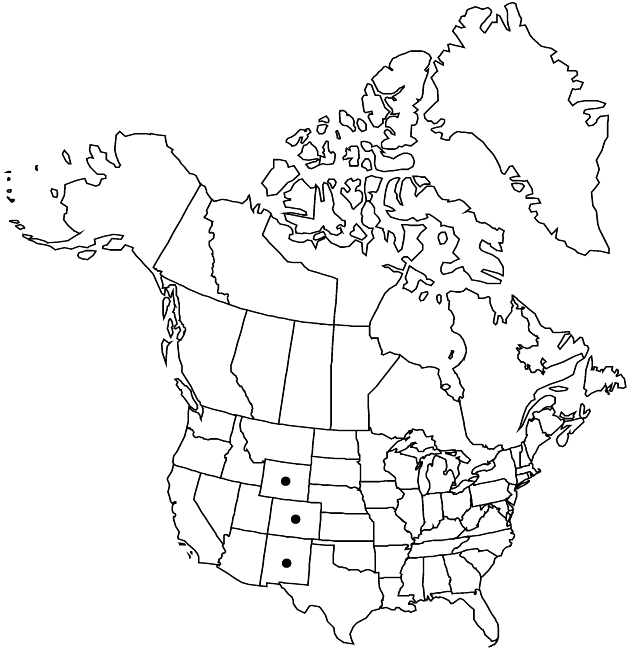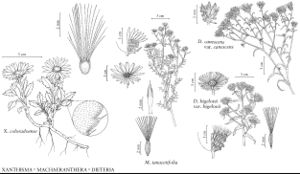Leaf blades lanceolate to oblanceolate, mid 20–80 × 6–15 mm, margins entire to irregularly dentate or serrate, faces glabrous or sparsely puberulent, often sparsely stipitate-glandular. Involucres broadly turbinate to hemispheric, 8–15 mm, widths 1–2(–3) times heights. Phyllaries 50–100, 1–2 mm wide (at midpoint), apices long-acuminate, 3–6 mm. Ray florets 30–60. 2n = 8.
Phenology: Flowering Jul–Oct.
Habitat: Meadows, open areas, subalpine coniferous forests, oak woodlands, grasslands, creosote bush or sagebrush scrublands, often along streams, roadsides
Elevation: 2300–3500 m
Distribution
Loading map...

Colo., N.Mex., Wyo.
Discussion
Variety bigelovii is found in the Rocky Mountains.
Selected References
None.
Lower Taxa
None.
